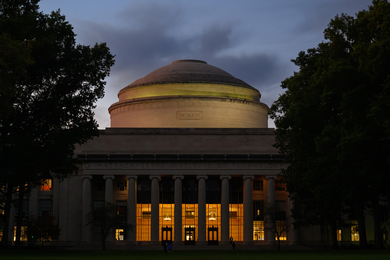STUDYING NUCLEAR REACTOR PROBLEMS
Although nuclear power accounts for about 20 percent of electric power generation in the United States (second only to coal), no new nuclear plants have been built or ordered for a long time. Several aging or troubled plants have been shut down.
"In this climate, it is imperative that nuclear utilities maximize the availability and efficiency of their plants while continuing to satisfy regulatory requirements," said Gordon Kohse, a research engineer at the Nuclear Reactor Laboratory.
To achieve these goals, a variety of problems must be addressed, a number of which are related to corrosion and chemistry in the coolant systems for nuclear reactors. A unique set of facilities within MIT's research reactor allows engineers to study such problems.
One example is a system to study cracks in reactor components caused by such factors as cumulative irradiation and instantaneous, radiation-induced changes in water chemistry. The system permits specimens to be tested under controlled conditions similar to those found in commercial reactors.
"Well-designed experiments permit relatively low-cost investigation of pressing reactor problems," Dr. Kohse said. "Results can be applied to the continued efficient and safe operation of nuclear power plants and thereby contribute to a stable and responsible system of electric power generation." The work is funded by the Electric Power Research Institute and the Tokyo Electric Power Co.
A version of this article appeared in MIT Tech Talk on September 12, 1998.





